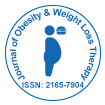New Treatment to Combat Obesity and Heart Disease
Received: 01-Apr-2022 / Manuscript No. JOWT-22-452 / Editor assigned: 02-Apr-2022 / PreQC No. JOWT-22-452(PQ) / Reviewed: 15-Apr-2022 / QC No. JOWT-22-452 / Revised: 20-Apr-2022 / Manuscript No. JOWT-22-452(R) / Published Date: 27-Apr-2022 DOI: 10.4172/2165-7904.1000492
Introduction
An interdisciplinary research team at The University of Texas at San Antonio has successfully developed an innovative inhibitor that shows promise in fighting obesity and potentially preventing heart disease. Researcher leading a team that developed an anti-obesity drug that blocks the effects of cytochrome P450 8B1, the enzyme linked to cholesterol absorption and obesity [1].
After designing and synthesizing it, scholar sent test samples to Chung's National Institutes of Health-funded laboratory, where she and her research team are conducting research on the effects of bioactive compounds - chemicals found in small amounts in plants and certain foods - and how exercise can be used to treat obesity and associated metabolic disorders [2].
Description
Growing up, I dreamed of helping my family members, who were affected by obesity and heart disease and other medical conditions. "This dream is now turning into a reality, as we have developed a small molecule that can be used to fight obesity, a problem seen in many families around the world [3].
As an exercise physiologist, I truly believe exercise is the best medicine to fight against noncommunicable diseases. Unfortunately, the adherence to exercise is quite low, and the prevalence of obesity is continuously rising. Based on promising data, I have high hopes of further testing.
UTSA's drug has the potential to stop the activity of P450 8B1, the enzyme that creates cholic acid in the body. This inhibition, in turn, decreases cholesterol absorption. This process may hold the key to treating obesity-associated metabolic disorders and other diseases linked to obesity, such as heart disease and diabetes.
The team's research included treating mice with the inhibitor drug for seven days. The result was a decrease in the levels of glucose in their blood - despite having been fed a high-fat and high-sucrose diet - without affects to their body weight. The results demonstrate how a P450 8B1 inhibitor could lead to a healthier metabolic profile and its potential could lead to developing a therapeutic strategy to treat obesity-associated insulin resistance [4].
Conclusion
Researchers work is representative of UTSA's mission to develop solutions for complex challenges that will improve the health and well-being of society. Creating a drug effective in preventing obesity could improve quality of life around the world.
According to the World Health Organization, 1.9 billion adults worldwide were overweight in 2016, and 650 million were classified as obese. Closer to home, one in every four deaths in the U.S. is due to heart disease, of which obesity is a major, contributor. Locally, 71% of adults are overweight or obese, according to a recent report from the San Antonio Metropolitan Health District [5].
These results show how our research in synthetic chemistry can significantly contribute to the well-being of society by treating obesity and heart disease.
References
- Bibbins-Domingo K, Coxson P, Pletcher MJ, Lightwood J, Goldman L (2007) Adolescent overweight and future adult coronary heart disease. N Engl J Med 357(23): 2371-2379.
- Eckel RH, Krauss RM (1998) American Heart Association call to action: obesity as a major risk factor for coronary heart disease. Circulation 97(21): 2099-2100.
- Curtis JP, Selter JG, Wang Y, Rathore SS, Jovin IS, et al. (2005) The obesity paradox: body mass index and outcomes in patients with heart failure. Arch Intern Med 165(1): 55-61.
- Guo F, Moellering DR, Garvey WT (2014) The progression of cardiometabolic disease: validation of a new cardiometabolic disease staging system applicable to obesity. Obesity 22(1): 110-118.
- Van de Voorde J, Pauwels B, Boydens C, Decaluwé K (2013) Adipocytokines in relation to cardiovascular disease. Metabolism, 62(11): 1513-1521.
Indexed at, Google Scholar, Crossref
Indexed at, Google Scholar, Crossref
Indexed at, Google Scholar, Crossref
Indexed at, Google Scholar, Crossref
Citation: Phelan S (2022) New Treatment to Combat Obesity and Heart Disease. J Obes Weight Loss Ther 12: 492. DOI: 10.4172/2165-7904.1000492
Copyright: © 2022 Phelan S. This is an open-access article distributed under the terms of the Creative Commons Attribution License, which permits unrestricted use, distribution, and reproduction in any medium, provided the original author and source are credited.
Share This Article
Recommended Journals
Open Access Journals
Article Tools
Article Usage
- Total views: 1579
- [From(publication date): 0-2022 - Apr 04, 2025]
- Breakdown by view type
- HTML page views: 1122
- PDF downloads: 457
